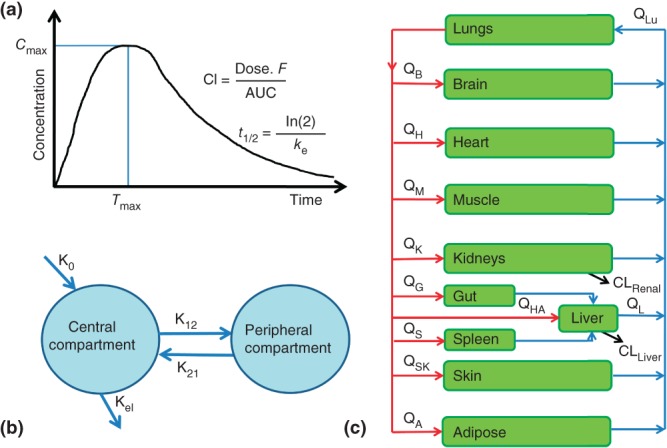FIGURE 3.

Overview of the main pharmacokinetic modelling methods. (a) Noncompartmental analysis is the preferred method to determine overall drug exposure (i.e., AUC), using the trapezoidal rule, and other pharmacokinetic parameters (e.g., Cmax, clearance, elimination half-life, etc.) as it involves few assumptions.84 (b) Compartmental and (c) physiologically based pharmacokinetic models (PBPK) are constructed from compartments that are interconnected using differential equations that describe drug flow between model constituents. Conventional compartmental models are constructed from one or more compartments that are descriptive, rather than mechanistically representative; the final model is parsimonious and compartments are only included if they noticeably improve the final model fit to the empirical data. PBPK models include multiple compartments that represent actual physiology (i.e., organs and blood), incorporate data from more diverse sources, and if properly validated can be used to make PK predictions and extrapolations for circumstances (e.g., different doses or routes of administration) beyond those used to construct the model.85 (Reprinted with permission from Ref. 86; Copyright 2013.
